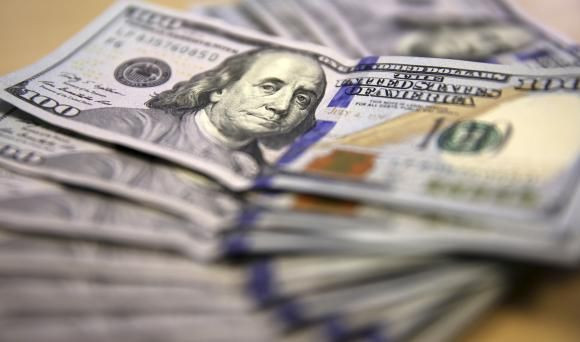Dollar's Rise Pressures Commodities Amid Fed Anxiety

(Reuters) - The U.S. dollar was riding high in Asia on Friday as incessant speculation about the outlook for U.S. interest rates undermined commodity prices and unwound leveraged trades in higher-yielding currencies.
Talk the Federal Reserve might take a hawkish turn at its policy meeting next week has seen U.S. Treasury yields steadily creep higher and injected new life into the dollar.
This sudden outbreak of volatility has prompted some to pare back on carry trades, where they borrow at low rates in euros and yen to buy higher-yielding assets such as commodity-linked or emerging market currencies.
Victims included the Canadian dollar, which plumbed a five-month low of C$1.1059, while Australia's dollar hit a six-month low of $0.9089.
The rise of the U.S. currency shoved oil prices to their lowest in two years, while gold melted to an eight-month trough and copper fell to a three-month low.
In contrast, the dollar's gains on the yen were considered positive for Japanese exports, corporate earnings and equities. The broad Topix index .TOPX was a shade firmer on Friday having hit its highest since July 2008.
Stocks elsewhere in the region have not fared so well as investors fret that even the hint of a shift in Fed policy might attract funds out of emerging markets. MSCI's broadest index of Asia-Pacific shares outside Japan .MIAPJ0000PUS was down 0.15 percent at one-month lows.
Wall Street was also on guard with the Dow .DJI ending Thursday down 0.12 percent, while the S&P 500 .SPX edged up 0.09 percent and the Nasdaq .IXIC 0.12 percent. Europe's broad FTSEurofirst 300 index .FTEU3 eased 0.13 percent.
While there was little in the way of major data due in Asia, figures on U.S. retail sales due later Friday could add to the unease about rates. Economists expect a solid rebound of 0.6 percent in August, up from a disappointingly flat reading in July and fueled by a boom in auto sales.
A strong result would only add to speculation the Fed might refine, or even drop, its commitment to keeping rates low for a "considerable time" after its asset purchase program ends.
YIELDS ON THE RISE
The jitters have been reflected most in short-term yields, with those on two-year Treasuries on track for their highest weekly close since April, 2011.
Yet investors assume any tightening campaign will be much less aggressive than in the past given the restrained outlook for inflation and a still heavily-indebted consumer.
Which is why yields on 10-year Treasuries are currently at 2.55 percent, well below the 3.30 percent held back in April, 2011.
Indeed, many analysts suspect the majority of voters at the Fed are wary of threatening the recovery with a too-hasty change to policy.
"The market will be on the defensive into next Wednesday's Fed meeting due to the growing contingent who are convinced a hawkish language change is imminent," said William O'Donnell, head of Treasury strategy at RBS.
"But bearish expectations may surpass what the Fed will deliver," he added. "We think September is a bit premature for a language change and that the Fed is just looking to have the conversation."
Still, a rise in U.S. rates seems certain to come sometime next year while the European Central Bank and the Bank of Japan remain committed to massive stimulus programs.
The diverging outlook for policy is considered generally bullish for the U.S. dollar in the long run and kept it elevated against a basket of major currencies at 84.264 .DXY.
It also reached a six-year high on the yen at 107.20, and was last at 107.07. The euro fetched $1.2923, having touched a 14-month trough of $1.2859 earlier in the week.
The pound gained a reprieve from recent selling when a YouGov poll showed supporters of keeping Scotland in the United Kingdom have clawed back a narrow lead over separatists, just one week before Scots vote in a referendum on independence.
On Friday, the pound was at $1.6251 and well up on the week's trough of $1.6052. The rise of the U.S. dollar kept gold pinned down at $1,238.66 an ounce.
Brent crude LCOc1 inched up 2 cents to $98.10 a barrel, having touched its lowest since July 2012 overnight. U.S. crude CLc1 bounced 16 cents to $92.99 a barrel.
© Copyright IBTimes 2024. All rights reserved.



















